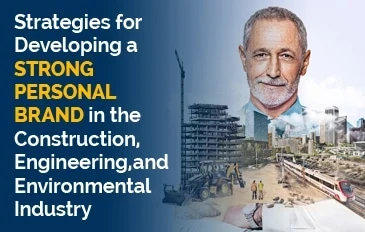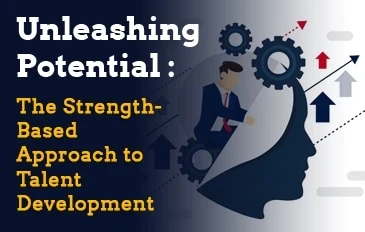Enhancing Your Job Search with Resume SEO: Increase Visibility and Land Your Dream

Enhancing Your Job Search with Resume SEO: Increase Visibility and Land Your Dream
In today’s competitive job market, it’s crucial to go beyond traditional resume writing techniques to stand out. By implementing Search Engine Optimization (SEO) strategies, you can optimize your resume for online visibility and increase your chances of landing your dream job.
In this blog post, we will explore effective techniques for using SEO to enhance the visibility of your resume. From keyword optimization to formatting and leveraging online platforms, we will provide actionable tips to help you rise above the competition and capture the attention of employers and recruiters.
- Research Relevant Keywords: Start by researching and identifying keywords that are relevant to your target industry or job role. Consider the specific skills, qualifications, and job titles commonly sought after by employers. Tools like Google Keyword Planner, industry-specific keyword research tools, and job postings can help you discover the most relevant keywords. Incorporate these keywords strategically throughout your resume, focusing on the headline, summary, skills section, and job descriptions. This will improve the chances of your resume appearing in search results when recruiters and hiring managers are looking for candidates with specific qualifications.
- Craft a Keyword-Optimized Headline: Your resume’s headline is the first thing employers and recruiters will see in search results. Craft a compelling headline that accurately represents your professional identity and includes relevant keywords. Instead of using a generic title like “Experienced Project Manager,” consider a more targeted and keyword-rich headline such as “Results-Driven Project Manager with Expertise in Construction and Budget Management.” This will increase the visibility of your resume and ensure it stands out in search results.
- Optimize Resume Formatting and Structure: In addition to keywords, search engines analyze the structure and formatting of your resume. Optimize your resume’s format to improve its SEO. Use clear headings and subheadings to organize content and make it easier to read. Incorporate bullet points to highlight key achievements, skills, and responsibilities. Avoid complex file formats that may hinder search engine crawling. Additionally, optimize your resume for mobile devices, as recruiters often review resumes on smartphones or tablets.
- Leverage Online Platforms and Job Boards: Maximize the visibility of your resume by utilizing online platforms and job boards. Upload your resume to reputable job boards and career websites, ensuring it’s easily searchable by employers and recruiters. Optimize your profile on professional networking sites like LinkedIn by incorporating relevant keywords, completing all sections, and regularly updating your profile. Join industry-specific groups and engage in relevant discussions to enhance your online presence and increase the likelihood of being discovered by potential employers.
- Create a Personal Website or Portfolio: Consider creating a personal website or portfolio to showcase your resume, work samples, and accomplishments. This provides an additional online platform to optimize for SEO. Optimize your website by incorporating relevant keywords throughout the content, including your resume section. Ensure your website is user-friendly, easily navigable, and optimized for search engines. By creating a personal brand and directing traffic to your website, you can enhance your visibility and make a memorable impression on potential employers.
- Build High-Quality Backlinks: Backlinks, or incoming links from other websites to your resume, can significantly improve its visibility. Share your resume on professional blogs, industry forums, or websites related to your field. Contribute guest articles or publications to reputable websites and include a link to your resume in your author bio. This not only increases exposure but also establishes your expertise and credibility in the industry. Additionally, reach out to relevant websites or blogs and inquire about guest posting opportunities to further expand your online presence.
- Regularly Monitor and Update: Continuously monitoring and analyzing the performance of your resume on job boards, personal website, etc. will aide greatly in ensuring maximum effectiveness.
Michael DeSafey is a leading executive recruiter for professionals in the construction, engineering, and environmental industries. He is currently the President of Webuild Staffing: www.webuildstaffing.com. To learn more about Michael, or to follow his blog, please visit www.michaeldesafey.com.
Strategies for Developing a Strong Personal Brand in the Construction, Engineering, and Environmental Industry

Strategies for Developing a Strong Personal Brand in the Construction, Engineering, and Environmental Industry
In the competitive landscape of the construction, engineering, and environmental industries, developing a strong personal brand is crucial for professionals seeking to differentiate themselves and stand out from the crowd. Your personal brand is a representation of your skills, expertise, and unique value proposition.
In this blog post, we will explore effective strategies for developing a strong personal brand in these industries. From defining your brand identity to leveraging online platforms and showcasing your expertise, we will provide actionable insights to help you establish a compelling personal brand that resonates with industry professionals and opens doors to new opportunities.
- Define Your Brand Identity: Start by clarifying your brand identity. Reflect on your strengths, skills, and unique qualities that set you apart from others in your industry. Identify your target audience and understand their needs, challenges, and aspirations. Craft a clear and concise personal brand statement that communicates your expertise, values, and the value you bring to the table. Defining your brand identity is the foundation for building a consistent and compelling personal brand.
- Showcase Your Expertise: Demonstrate your expertise by sharing your knowledge and insights with others in the industry. Leverage platforms such as LinkedIn, industry-specific forums, and professional blogs to publish articles, case studies, and thought leadership pieces. Participate in industry events as a speaker or panelist to showcase your expertise and establish yourself as a subject matter expert. Consistently create and share valuable content that addresses industry challenges, trends, and best practices to position yourself as a go-to resource in your field.
- Build an Engaging Online Presence: In today’s digital age, your online presence plays a critical role in shaping your personal brand. Create a professional website or online portfolio that showcases your work, accomplishments, and testimonials. Optimize your LinkedIn profile to highlight your skills, experiences, and achievements. Engage actively on social media platforms by sharing industry-related content, participating in discussions, and connecting with influencers and thought leaders. Maintain a consistent and professional online presence that reflects your personal brand and values.
- Cultivate Professional Relationships: Networking and relationship-building are integral to personal branding. Attend industry conferences, seminars, and events to meet professionals in your field. Engage in meaningful conversations, exchange business cards, and follow up with contacts afterward. Build and nurture relationships by offering support, providing value, and seeking opportunities for collaboration. Actively participate in professional associations, committees, and online communities to expand your network and establish valuable connections.
- Seek Professional Development Opportunities: Continuously invest in your professional development to enhance your personal brand. Attend workshops, webinars, and training programs to acquire new skills and stay updated with industry trends. Pursue certifications or advanced degrees that demonstrate your commitment to excellence. Engaging in lifelong learning not only adds value to your personal brand but also positions you as a dedicated and knowledgeable professional in your field.
- Deliver Exceptional Results: Ultimately, your personal brand is reinforced by the quality of work you deliver. Strive for excellence in every project or task you undertake. Consistently exceed expectations, meet deadlines, and deliver results that showcase your skills and expertise. Foster a reputation for reliability, integrity, and professionalism. Satisfied clients and colleagues will become brand ambassadors, advocating for your skills and referring you to new opportunities.
In conclusion, developing a strong personal brand in the construction, engineering, and environmental industries requires a strategic and consistent approach. By defining your brand identity, showcasing your expertise, building an engaging online presence, cultivating professional relationships, seeking professional development opportunities, and consistently delivering exceptional results, you can establish a personal brand that resonates with industry
Michael DeSafey is a leading executive recruiter for professionals in the construction, engineering, and environmental industries. He is currently the President of Webuild Staffing: www.webuildstaffing.com. To learn more about Michael, or to follow his blog, please visit www.michaeldesafey.com.
Afraid of Being Fired? Use That Fear to Your Advantage

Afraid of Being Fired? Use That Fear to Your Advantage
The fear of being fired is a common concern in the workplace, causing stress and anxiety for many employees. However, rather than allowing this fear to consume us, we can learn to harness it as a catalyst for personal and professional growth. In this blog post, we will explore how you can use the fear of being fired to your advantage. By shifting your mindset, taking proactive steps, and leveraging the fear, you can transform it into motivation, resilience, and ultimately, success.
- Embrace Self-Reflection and Evaluation: The fear of being fired can serve as an opportunity for self-reflection. Take a step back and objectively evaluate your performance, identifying areas for improvement. Reflect on your strengths and weaknesses, and consider how you can enhance your skills to become an invaluable asset to your organization. Use this evaluation as a starting point for personal growth and professional development.
- Seek Feedback and Act on It: Feedback is a valuable tool for growth, and it can help alleviate the fear of being fired. Actively seek feedback from supervisors, colleagues, and mentors to gain insights into areas where you can improve. Embrace constructive criticism and use it as a stepping stone to enhance your performance. Take proactive measures to address feedback and demonstrate your commitment to personal growth and professional excellence.
- Build a Strong Professional Network: Networking is crucial in today’s competitive job market. Leverage the fear of being fired to expand your professional network. Attend industry events, join relevant associations, and engage in online communities. Networking not only provides access to new opportunities but also enables you to learn from experienced professionals, gain insights into industry trends, and build relationships that can support and guide you in your career.
- Upskill and Stay Relevant: The fear of being fired can ignite a desire to upskill and stay ahead of the curve. Invest in continuous learning by attending workshops, enrolling in relevant courses, or pursuing certifications. Stay updated with industry trends, technological advancements, and evolving best practices. By continuously developing your skills and knowledge, you enhance your marketability and increase your value to your current organization or potential future employers.
- Take Initiative and Showcase Value: One effective way to combat the fear of being fired is to take initiative and proactively contribute to your organization. Identify opportunities to go above and beyond your assigned tasks, propose innovative solutions, and take on additional responsibilities. Actively seek out projects or initiatives that align with your strengths and showcase your value to the organization. Demonstrating initiative not only sets you apart from your peers but also increases your job security by highlighting your contributions and commitment.
- Develop Resilience and Adaptability: Instead of succumbing to fear, cultivate resilience and adaptability. Embrace change and view setbacks as opportunities for growth. Develop a positive mindset and adopt a solution-oriented approach to challenges. By building resilience, you become better equipped to handle unexpected situations and navigate through uncertainty, increasing your ability to thrive in the face of potential job insecurity.
In conclusion. The fear of being fired is a powerful emotion that can either paralyze or motivate us. By reframing this fear and using it to our advantage, we can harness its energy to propel our personal and professional growth. Embrace self-reflection, seek feedback, expand your network, upskill, take initiative, and develop resilience. Remember, the fear of being fired can be a catalyst for positive change and can ultimately lead to increased job security, enhanced performance, and new opportunities for success.
Michael DeSafey is a leading executive recruiter for professionals in the construction, engineering, and environmental industries. He is currently the President of Webuild Staffing: www.webuildstaffing.com. To learn more about Michael, or to follow his blog, please visit www.michaeldesafey.com.
Unleashing Potential: The Strength-Based Approach to Talent Development

Unleashing Potential: The Strength-Based Approach to Talent Development
In the world of talent development, a paradigm shift has occurred. Traditional approaches often focused on identifying and fixing weaknesses, but today, a strength-based approach is gaining momentum. This blog post aims to explore the power and benefits of adopting a strength-based approach to talent development. We will delve into the principles, strategies, and impacts of leveraging individual strengths to unlock untapped potential, enhance employee engagement, and drive organizational success.
- Understanding the Strength-Based Approach: The strength-based approach centers on identifying and cultivating individuals’ unique strengths and talents. Instead of solely focusing on weaknesses or skill gaps, this approach emphasizes harnessing and leveraging existing strengths to achieve excellence. It acknowledges that each individual possesses a set of natural talents and abilities that, when nurtured, can lead to exceptional performance and fulfillment.
- Identifying Individual Strengths: Discovering individual strengths is a critical first step in the strength-based approach. Various methods, such as assessments, interviews, and self-reflection exercises, can help individuals recognize their innate talents. Tools like the CliftonStrengths assessment or VIA Character Strengths survey provide valuable insights into one’s top strengths, enabling individuals and organizations to align roles and responsibilities with these inherent capabilities.
- Cultivating Strengths in the Workplace: Once strengths are identified, organizations can create an environment that fosters the development and application of these strengths. This can be achieved through targeted training programs, coaching, and mentoring initiatives. Opportunities for employees to apply their strengths in meaningful ways, such as assigning tasks that align with their strengths or creating cross-functional teams that leverage diverse strengths, can significantly enhance engagement and productivity.
- Benefits of a Strength-Based Approach: The strength-based approach brings numerous benefits to both individuals and organizations. For individuals, it boosts self-awareness, confidence, and motivation, allowing them to excel in their areas of strength. It promotes a positive mindset and a sense of fulfillment, leading to increased job satisfaction and overall well-being. Organizations benefit from higher employee engagement, increased productivity, and improved team dynamics. Leveraging strengths enhances collaboration, as individuals bring complementary skills to achieve collective goals.
- Leadership and the Strength-Based Approach: Leaders play a crucial role in implementing the strength-based approach. They can create a culture that values and recognizes individual strengths, inspiring others to do the same. Effective leaders invest time in understanding their team members’ strengths and aligning tasks and projects accordingly. They provide opportunities for growth and development that capitalize on strengths, fostering an environment of continuous improvement and innovation.
- Overcoming Challenges and Potential Pitfalls: While the strength-based approach is powerful, challenges may arise during implementation. It is important to avoid neglecting areas of improvement entirely, as a balanced approach is essential. Additionally, overcoming potential biases and stereotypes is crucial, ensuring equal opportunities for all employees to showcase their strengths. Regular feedback and coaching are necessary to provide support and help individuals maximize their strengths while addressing any performance gaps.
In conclusion, embracing a strength-based approach to talent development can unlock untapped potential, enhance engagement, and drive exceptional performance. By recognizing and cultivating individual strengths, organizations foster a culture of empowerment and fulfillment. Leaders who embrace this approach create environments where employees thrive, leading to higher productivity and innovation. As the strength-based approach continues to gain recognition, it is clear that focusing on strengths is a game-changer in talent development, enabling individuals and organizations to reach new heights of success.
Michael DeSafey is a leading executive recruiter for professionals in the construction, engineering, and environmental industries. He is currently the President of Webuild Staffing: www.webuildstaffing.com. To learn more about Michael, or to follow his blog, please visit www.michaeldesafey.com.
Category: Career Training, Construction, Employer Tips, Engineering, Environmental
Understanding the Long-Term Benefits of Proper OSHA Training In The Construction, Engineering and Environmental Industries.

Understanding the Long-Term Benefits of Proper OSHA Training In The Construction, Engineering and Environmental Industries.
What is OSHA?
OSHA (Occupational Safety and Health Administration) was created in the 1970’s in response to the Occupational Safety and Health Act to ensure safe and healthy working conditions for men and women by setting and enforcing standards, as well as providing proper training and education. Every job has its own set of OSHA regulations that employers must meet to ensure the health and safety of their employees. On top of that, each job has its own specialized OSHA training which all employers are required to have their employees partake in and regularly refresh on. OSHA representatives provide regular audits at companies to ensure employers are keeping work environments safe for their employees and that employees are continuing to use safe practices when performing their duties.
How do I meet OSHA requirements as an employee?
All employers are required to ensure all their employees are trained in OSHA certified safety measures. At Webuild Training they offer a wide variety of specialized OSHA safety courses designed for those seeking employment in the fields of construction, engineering, power, utility, real estate, and industrial markets. By providing the most up to date and effective courses, you can meet all compliance guidelines for your career. Each industry has its own set of training guidelines and with the work at your own pace web-based learning modules, you don’t have to worry about any scheduling conflicts arising as you would with a classroom-based instruction. Instead, sign up for our fully contracted and compliant training courses. They offer over 1,000 courses for new employees, as well as required refresher courses for preexisting employees needing to meet their annual compliance requirements.
What is the benefit?
Proper OSHA training is the keystone to an accident free work environment. For the employer, they benefit by meeting the national requirements and by having fewer work related accidents. Fewer work related accidents means higher productivity and less lost time for people having to take time off from work to recover or investigations related to the mechanism of injury. Having well trained, safe employees will always pay off in the grand scheme. Ensuring all employees are properly trained and all equipment is OSHA certified and in working order greatly benefits the productivity of employers. Regular equipment inspections and OSHA re-certification instills a feeling of security in all parties involved.
For employees, avoiding accidents is the best way to avoid unintentional time away from work. Remembering safety training in all aspects of work enables employees to work in and maintain a safe environment. Following OSHA guidelines greatly reduces the chance of on the job accidents. Being a safe, productive employee should be on the top of everyone’s list.
Do not ignore damaged equipment. If you see something, say something, and if it has been awhile since your last OSHA re-certification, speak up. These statements ring especially true in the career pathways of construction, engineering, and environmental services. Serious injury and even death can occur if you do not adhere to OSHA guidelines at any of these jobs. A construction worker’s failure to regularly inspect his machinery and tools can cost him his life. An engineer who does not properly lock out a machine before climbing in to inspect it can be accidentally maimed or crushed. Taking the time to perform all tasks safely is worth your time, every time. Following through will lead to a satisfying career in a safe, healthy environment for all.
Michael DeSafey is a leading executive recruiter for professionals in the construction, engineering and environmental industries. He is currently the President of Webuild Staffing www.webuildstaffing.com . To learn more about Michael or to follow his blog please visit www.michaeldesafey.com
The Top 10 Skills That Will Be In Demand By Employers In The Future

The Top 10 Skills That Will Be In Demand By Employers In The Future
By the year 2020, employers are going to require more from their workers than ever before. Having the essential skills necessary to succeed in the construction, engineering, and environmental industries will be an absolute necessity to advance within the industry.
Employers have stated capable employees that have a mix of skill sets fulfilling a range of needs within their organizations will be the most valuable to them. Below are the top ten essential skills professionals will need to master.
Creativity – Creativity is and will still be a relevant and important skill that will allow for innovation within technology arena, as well as, assuring projects are completed successfully.
Negotiation – Skills in negotiation are still uniquely human and will be highly valued in management jobs similar to project managers, superintendents and executive directors. The abilities to negotiate contracts, mange subcontractors and interact / communicate with clients at a senior level is currently and will be even more highly desired by employers.
Critical Thinking – Automated processes, like robots, have not caught up with the way humans use different approaches to evaluate certain strengths and weaknesses to tackle a problem. The ability to critically think through an issue and produce a desire result is essential.
People Management – The ability to manage people, have an eye for finding the right individuals for a job and motivating them will be a crucial skill in 2020.
Coordinating – Knowing how to work with others to get a job done is essential in today’s marketplace. It will be even more essential in the future.
Emotional Intelligence – Companies will want to hire employees that have a strong level of emotional intelligence. People that understand how to interact with others and why they react the way they do to anticipate issues in advance.
Problem Solving Skills – Arguably the most important skill to have in 2020, the ability to solve complex problems will be a highly sought after skill. With all the information available in today’s environment, individuals that can leverage information and apply it to solve real world problems is one of the most difficult skills to master.
Strong Decision Makers – Having the ability to analyze information and/or a situation and make a decision will be an important role in the job field of 2020. This is especially true as companies are growing and need individuals that can make the right decisions consistently.
Service Orientation– Service orientation falls under the social skills category, but warrants its own spot on the list. Service orientation pertains to helping others, whether it be customers or employees, through social interaction to achieve a mutual goal will be essential and highly sought after by employers.
Cognitive Abilities – Thinking about multiple concepts simultaneously is a skill set not high on the list in 2015, but will be in the coming years. The ability to bring all the above skills together use logic, problem solving, and creativity to lead and solve problems will be the most essential skill desired by employers in 2020.
Michael DeSafey is a leading executive recruiter for professionals in the construction, engineering and environmental industries. He is currently the President of Webuild Staffing www.webuildstaffing.com . To learn more about Michael or to follow his Blog please visit www.michaeldesafey.com
Looking For A Job?? You Better Be Up To Date With The Newest Technology…

Looking For A Job?? You Better Be Up To Date With The Newest Technology…
As a career professional that has been advancing in the workplace; you have a need to stay up to date on the influx of new technologies that affect your job performance and daily duties.
Whether you work in the office or out in the field; the last few years have brought about a wealth of new technologies that make you more efficient, productive and most importantly to employers a profitable employee.
With this new technology though comes the need as a job seeker and employee for you to stay up to date and aware of the advancement of these new technologies around you.
In today’s marketplace employers expect existing and new employees to have a strong understanding of smart phones, web-based platforms / productivity applications, and social media. These applications are the basis of many day to day activities that all employees need to interface with to be a productive employee (MS Office Suties, Email Platforms, Facebook, Twitter,etc..).
Beyond these basic applications are industry specific applications for engineering, construction, marketing, business development, etc. (SaleForce.com, CRM’s, Primavera, JD Edwards, etc..) that are all necessary talents an employee needs to have to function daily and advance within an organization.
Efficiency is the name of the game today for employers. “How do we make our employees more productive, by utilizing technology efficiently..” Employers see the need for efficiency and technology allows them to reduce costs, increase efficiency and manage projects corporate wide as a whole.
So as an employee here are a few tips to stay ahead of the technology trends in your industry.
1. First assess what technologies are being used in your work environment currently? Do you have the proficiency in those applications? If not start learning them..
2. Examine how your industry is utilizing technology outside of your workplace. Subscribe to trade journals, read product reviews, read developer websites, etc. to stay up to date on the newest trends in the marketplace. Why are employers utilizing this software, how are they using it, and what benefits will it have specifically to your workplace. Learn what trends are advancing in your industry.
3. Invest in your success!! Take training courses, online webinars, attend seminars, or trade shows and learn how to use these up and coming technologies.
4. Interact with your IT department. Most IT professionals are well aware of the existing technologies and developing trends for your industry. Take your IT manager to lunch or sit and talk with them over a cup of coffee about your company’s existing technology and things you have seen in the marketplace. Ask to be involved in BETA testing new technologies that they may be implementing.
The demand for efficient technology will continue to evolve in the years ahead, and become even a more integrated part of our lives and work. Staying up to date on these new technological advances will require you to do some work, but the rewards and advances to your career will make it well worth it.
Michael DeSafey is a leading executive recruiter for professionals in the construction, engineering and environmental industries. He is currently the President of Webuild Staffing (www.webuildstaffing.com ). To learn more about Michael or Follow his Blog please visit www.michaeldesafey.com
